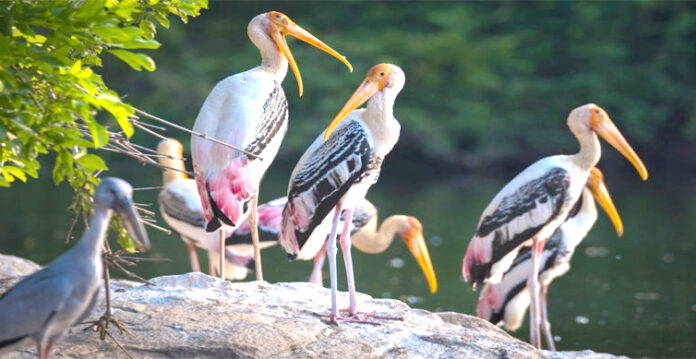The arrival of migratory birds at the National Zoological Park (NZP) wetlands has been noticeably impacted by global climate change, with several such habitats across the country also witnessing similar trends. Despite this, the NZP wetlands have still managed to host a limited number of migratory water birds, including species like the Common Teal, Common Sandpiper, and Great Cormorant, which were observed this month.
T.K. Roy, an eminent ecologist, highlighted the significance of the NZP wetlands, which comprise a cluster of four smaller wetlands. These wetlands serve as a crucial habitat for both resident and migratory water birds, and have notably supported the breeding colony of Painted Storks for several decades. The area is an essential site for bird watchers and conservationists, especially due to its role in sustaining the biodiversity of migratory species.
The Asian Waterbird Census (AWC), part of the global International Waterbird Census, has also observed a decline in waterbird species diversity in the region this year. Roy mentioned that, according to the 2025 census data, the total waterbird species recorded at NZP had decreased to 19, compared to 17 species in 2024. This year, NZP recorded 16 resident species and only three migratory species, including the Common Sandpiper, Great Cormorant, and Common Teal. In contrast, AWC 2024 recorded a higher total population of 1,249 waterbirds, including 15 resident species and 2 migratory species.
Also Read: 92,885 migratory birds of 85 species spotted in Himachal’s Pong wetlands
Among the resident species, NZP’s wetlands continue to support significant numbers, including 382 Painted Storks, 58 Indian Cormorants, 37 Little Egrets, and 41 Great White Pelicans. However, the migratory species numbers have seen a reduction compared to last year, with the Painted Storks showing a particularly sharp decline, from 985 in 2024 to just 382 this year.
Roy explained that the AWC, conducted annually in January across 27 countries in Asia and Australasia, plays a pivotal role in the conservation of wetland and waterbird species. The census generates valuable data that contributes to the Ministry of Environment, Forest and Climate Change (MoEFCC)’s “National Action Plan for the Conservation of Migratory Birds and Their Habitats along the Central Asian Flyway.” This initiative is part of global efforts to safeguard migratory birds and their natural habitats, ensuring sustainable ecological balance.
The AWC at NZP this year took place with the active involvement of local bird enthusiasts, volunteers from Amity International University and Ramanujan College, as well as NZP staff, under the coordination of the NZP Director. The census, which engages passionate bird watchers and experts, offers valuable insights for conservation strategies and the management of wetland ecosystems.
Despite the challenges posed by climate change, the continued monitoring and conservation efforts at NZP highlight the resilience of local wildlife and the importance of protecting vital wetland habitats. As we look ahead, ongoing efforts will be crucial in supporting the future of migratory birds, ensuring their safe passage along their migratory routes.
This year’s census results emphasize the need for increased awareness and action in the face of climate change, which is altering migratory patterns and threatening the delicate ecosystems that sustain these bird populations. The AWC’s contribution to global conservation efforts cannot be overstated, as it continues to offer a key tool for managing and preserving vital wetland habitats for generations to come.
(This story is sourced from a third-party syndicated feed. Raavi Media takes no responsibility or liability of any nature. Raavi Media management/ythisnews.com can alter or delete the content without notice for any reason.)


